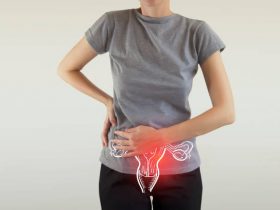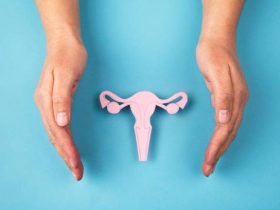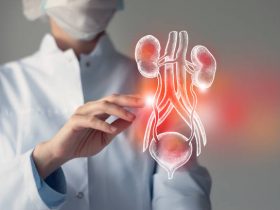Most commonly, harmless bacteria living in our body like those of skin and bowel can infect urinary tract and cause cystitis. Escherichia Coli abundantly present in your bowel can sometimes attack urinary system and enters the bladder.
Most of the bacterial infections of urinary tract are acute uncomplicated cystitis, that can be treated with antibiotics.
Women are more susceptible because of the physiology of their private parts. Their back passage (anus) is closer to urethra and urethra is much shorter that can easily transmit bacteria to bladder. Some of the major sources of getting bacteria to cause a UTI are as follows:
- Being sexually active
- Incorrectly wiping your bottom after going to the toilet
- Inserting a tampon and maintaining a poor hygiene
- Prolong use of catheter (a tube) to evacuate urine
- Contraceptive diaphragm
What causes acute bacterial cystitis?
Harmful bacteria entering your body may cause acute cystitis followed by pain and discomfort in the bladder. Most acute uncomplicated cystitis are caused by E.coli while other infection causing bacteria include:
- Proteus mirabilis
- Klebsiella pneumoniae
- Staphylococcus saprophyticus
- Group B streptococci
- Lactobacillus
- S. saprophyticus
- Enterococcus species
- Citrobacter species
Bacterial cystitis (BC) or acute uncomplicated cystitis is the most occurring condition in women, and is not considered as a serious health problem. However, it is evidenced that it can badly affect their quality of life. BC is characterized by an estimated six days of uneasiness and cause the patient to miss their normal daily routine. A study showed that nearly one-half of the participants with bacterial cystitis (mostly women) reported to miss their work or school, and avoid sexual activity for at least one week.
How bacterial cystitis is clinically diagnosed?
First of all, clinical diagnosis starts with patient’s history of symptoms and their treatment, which is followed by physical examination and urinalysis. Doctors perform their tests to rule out the chances of serious and complicated UTIs and other infections.
The diagnosis of bacterial cystitis can be precisely defined as an uncomplicated UTI in premenopausal, unpregnant women without any urologic abnormalities and other morbidities.
The key diagnostic features of an uncomplicated bacterial cystitis include urine urgency and increased frequency with onset of dysuria. Here, dysuria is the pain and burning sensation in urethra during urination
Our web doctors recommend urine culture for those women only who have signs of acute pyelonephritis. Such patients show serious atypical symptoms that are persistent and relapse after few weeks of treatment.
What are the initial symptoms of bacterial cystitis?
Definitive clinical symptoms to diagnose a bacterial cystitis include dysuria, frequent urination in small volumes, and incompetence to hold urine or urinary urgency. Occurrence of hematuria (blood in urine) can be seen, although its rare.
When a woman is presented with acute onset of one of the abovementioned symptoms of bacterial cystitis, the likelihood of infection increases up to 50%. So, presence of one or more characteristic symptoms are considered as a simplest and significant diagnostic test in itself. However, if the patient is women and complains for vaginal discharge and irritation, the chances of bacterial cystitis become less, and it is more likely that the women is having vaginitis or cervicitis.
Can bacterial cystitis be self-diagnosed?
As every patient cannot seek medical help immediately, the acute symptoms of bacterial cystitis can be self-diagnosed and can be cured by telephone management from health resources. The self- diagnosis is easier for patients who previously have had bacterial cystitis. A report showed that mostly women are able to self-diagnose their UTI and cystitis by monitoring their symptoms and get primary treatment through first-line antibiotics on their own.
Investigation through physical exam and diagnostic tests
Physical examination of patients with bacterial cystitis is simple and upfront, with the exception of 10-15% women who have suprapubic tenderness. However, keep in mind that the chances of pyelonephritis should be ruled out first and seek medical help instantly when you experience fever, pain in lower belly, concomitant fever, tachycardia and vertebral tenderness.
Urine dipstick test– is a convenient and economical diagnostic test for bacterial cystitis that can be performed at home. It is effective in evaluating any abnormality in urine and is an alternative to urinalysis and urine microscopy.
Urine culture test– is performed for more critical patients who have the signs of acute pyelonephritis and their symptoms relapse within one month after the termination of treatment. In this test, if colony count is greater than or equivalent to 103 units/ml of a uro-pathogen is indicative of acute bacterial cystitis.
Imaging studies like computed tomography or ultrasonography are performed for those critical patients who have become insensitive to antimicrobial therapy in past, and have serious complications.
Treatment of bacterial cystitis
Although, antibiotics are ultimate cure of bacterial cystitis, no single agent is effective alone to treat the condition. Therefore, selection of recommended agents should be specific for every patient. Correct choice of antibiotics depends on several factors including its effectiveness, risks of side effects, rates of resistance, and its tendency to cause collateral damage (ecological side effects of antibiotics which let the drug-resistant organisms to grow and cause infection).
Research experts and medical professionals recommend three tiers for first-line treatment of bacterial cystitis. In these guidelines, first tier includes Fosfomycin (Monurol), nitrofurantoin (macro crystals), and trimethoprim/sulfamethoxazole. These antibiotics are super effective in the regions where E.Coli resistance is not greater than 20%.
Fluoroquinolones (ofloxacin, ciprofloxacin, levofloxacin) are the second-tier antimicrobials, which are suitable in the situations where patients are allergic to the recommended agents.
Third tier includes amoxicillin/clavulanate, cefdinir, and cefpodoxime. Beta-lactam antibiotics, cefaclor, and third tier antimicrobial agents are not suitable for first-line treatment because they may cause antibiotic resistance.
Think you may have bacterial cystitis? Need more information? Speak to our online doctors in Ireland today.
References
Everything you need to know about cystitis





